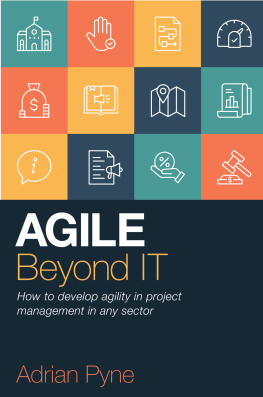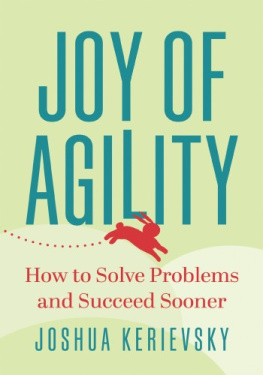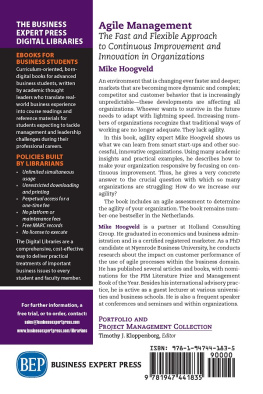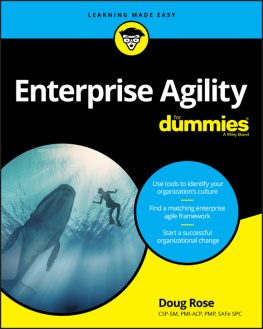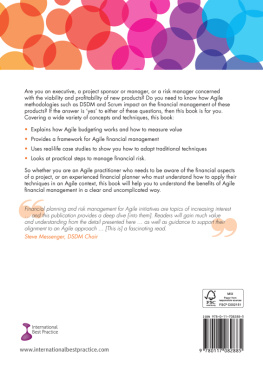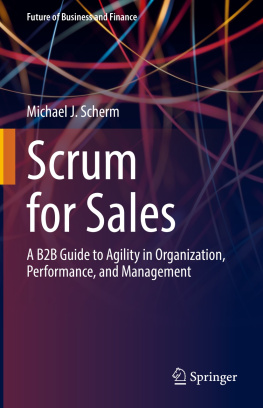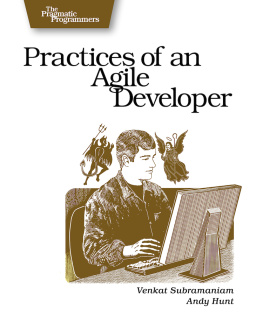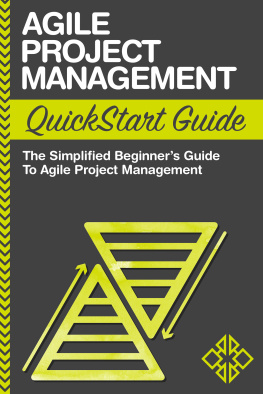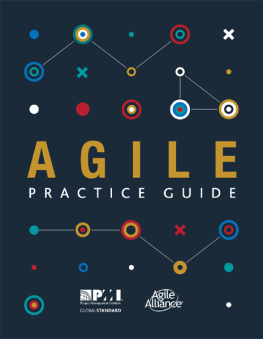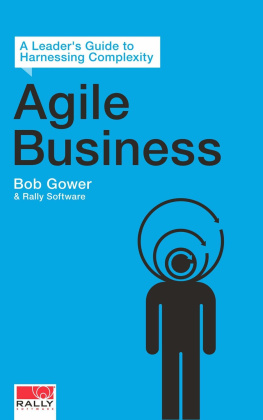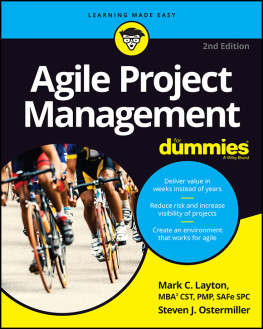Having spent more than 25 years working on and managing projects, I recognized many of the anecdotes in Agile Beyond IT. Not only is it easy to read, it gives a reflective account of managing projects, with a good dose of realism. Looking beyond IT projects it recognizes the need for agility in all projects, whilst not necessarily having to give them the label of an agile project. It gives a balanced view by comparing and contrasting the views of the APM, PMI and Prince. I endorse this book for those at the start of their careers about to start working on projects, project professionals already managing projects (agile or otherwise) and those responsible for creating the environments in which projects exist. For me, Agile Beyond IT addresses several key misconceptions and learnings about agile, which include: SCRUM is not an agile project management framework; agile is not a silver bullet; agile projects still need a PMO and risk cannot be ignored but we could stand a bit closer to the cliff edge by letting project professionals use their judgment; and finally being allowed to fail early saves cost and embarrassment. My key take-away from the book is there are two important ingredients to being agile: environment and people. Recognizing both of these will still need tools and processes.
Stephen Jones Sellafield Ltd
Adrian clearly and powerfully explains how to make the organization more agile. He stresses the need for adaptation and improvement of cultural values and the policies, assumptions, practices, standards, structure, relationships and beliefs that inform and influence that culture. His book focuses on people and the agile processes that support that journey. Highly recommended.
Brian Wernham CEng, ChPP Author of Agile Project Management for Government
Adrians book is well-written, and an interesting and easy read. Illustrating explanations of ideas, principles, approaches, etc with real-life examples is always helpful, and this book is rich with these. As a P3 Assurance Professional, I particularly like his emphasis on the importance of assurance in agile projects as being no less than in traditional non-agile projects, just like any other component of project management. The reader may also be interested in the APM guide Guide to the Assurance of Agile Delivery, for which Adrian was an important contributor.
Roy Millard Founder and former chair of APM Assurance SIG and owner of P3 Risk & Assurance
Read this book if you are thinking of changing your organisation to use agile techniques. It describes the mindset, in readable text, you will need from Board, sponsors and project managers and provides examples to support this.
Roger Garrini RPP FAPM chairman at APM Midlands, secretary APM Governance SIG and chair of Wolverton Town CC.
Having worked on projects and improving project management for over 40 years, I have encountered both bad and good examples of agility, albeit we may not have used the A word. Adrian pulls the covers off the preoccupation with agile being the domain of IT and places it firmly in the business context. He explains that SCRUM is not project management and demonstrates that good project management structure and practice is still a fundamental enabler. But its the way it is applied and the mindset of those involved that generates successful outcomes.
As well as providing good advice and examples to project managers on being more agile, Adrian also tackles the thorny stakeholder and governance issues. He suggests how those that are on the periphery of the project action, but fundamental to its success, need to view projects through a different lens. Those responsible for governance need to establish a supportive culture, focus on value and outcomes more than outputs, be comfortable with less predictability, champion empowerment, allow trial and error and encourage flexibility. Adrian shows how rigid adherence to process and methodology (as surely that gives a predictable outcome?) and what I did on my last project has been shown to not deliver success.
I commend this book to all project practitioners to adopt Adrians more adaptive approach and reap the benefits from increased agility to deliver more successful project outcomes.
Martin Samphire FAPM former chair of APM Governance SIG, owner of 3pmxl Ltd and associate director of Deepteam
A must read for anyone wanting to apply agile to their next project!
Adrians book is highly insightful, engaging, and a delight to read through his ability to bring to life agile concepts through his extensive and rich experience stemming from the world of agile project management and beyond. It is a breath of fresh air and a much-needed addition to the project managers toolkit in order to overcome challenges and leverage the benefits of agile project management beyond IT.
Dr Nicholas Dacre associate professor of project management and director of the Advanced Project Management Research Centre, University of Southampton, UK
Adrians book is a strong attempt to welcome the project manager that has seen agile simply as hocus pocus to listen to some of the benefits offered via numerous simple examples. I dont see him as an agilist on a holy war (and there are a few); instead he really wants to share what hes learned. Points that I noted: he concludes that a project manager equipped to be agile will be able to carry out good project management; and also recognises that projects need an integrated approach within an organizational hinterland organizations which need to be prepared to take on a journey to improve rather than expect magic somehow to happen. And the best part: I can hear Adrians voice reading it!
David Dunning founder of Core P3M Data Club CIC, co-founder of Deepteam and chairman of Corporate Project Solutions
Adrian takes agile back to its roots and original principles and brings practicality to a subject that is sometimes seen with an air of mystery and as an excuse to avoid project control and rigour. Adrian dispels this myth, having been there and done it (and with the scars to prove it!) and provides lived experiences to bring the principles of agile to life. He demonstrates that agile delivery and agility live in harmony with traditional project delivery methods, showing it is not one or the other, but in fact both, living in harmony.
If you want to understand how to deliver projects more successfully and how to combine traditional and agile approaches, this is a very smart choice. I thoroughly recommend Adrians book and only wish Id had this evidence at my fingertips some years ago!
Lara Taylorson BSc (Hons) ChPP RPP FAPM AMICE director of L S Taylorson Consulting Ltd
Successful projects are about giving people what they meant. Not what they wanted or needed.
Successful project people make sure they are a significant and influential part of those conversations.
It is a combination of mindset and toolset. Mostly mindset. Youve got to know the rules and have the confidence to break the rules if it means getting to what is meant rather than just what is specified. So often the purpose of the project, the vision, is absent.
Project and programme people still hide behind the precise delivery of scope when they know that it is not what is meant. Which is also an abdication of the duty of care that an expert or experienced professional should always bring to their work rather than as a chargeable extra that allows major change order revenue to be identified and generated.
2022 is the centennial year of the polar explorer Shackleton who consistently adapted to survive and preserve the wellbeing of all involved. On the other hand, Captain Scott adhered rigorously to his scope and left us with a very detailed account of the accident.
Next page
